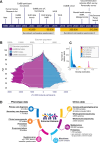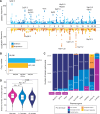The Estonian Biobank's journey from biobanking to personalized medicine
- PMID: 40188112
- PMCID: PMC11972354
- DOI: 10.1038/s41467-025-58465-3
The Estonian Biobank's journey from biobanking to personalized medicine
Abstract
Large biobanks have set a new standard for research and innovation in human genomics and implementation of personalized medicine. The Estonian Biobank was founded a quarter of a century ago, and its biological specimens, clinical, health, omics, and lifestyle data have been included in over 800 publications to date. What makes the biobank unique internationally is its translational focus, with active efforts to conduct clinical studies based on genetic findings, and to explore the effects of return of results on participants. In this review, we provide an overview of the Estonian Biobank, highlight its strengths for studying the effects of genetic variation and quantitative phenotypes on health-related traits, development of methods and frameworks for bringing genomics into the clinic, and its role as a driving force for implementing personalized medicine on a national level and beyond.
© 2025. The Author(s).
Conflict of interest statement
Competing interests: The authors declare no competing interests.
Figures




References
-
- Leitsalu, L. et al. Cohort profile: Estonian Biobank of the Estonian Genome Center, University of Tartu. Int. J. Epidemiol.44, 1137–1147 (2015). - PubMed
Publication types
MeSH terms
LinkOut - more resources
Full Text Sources

